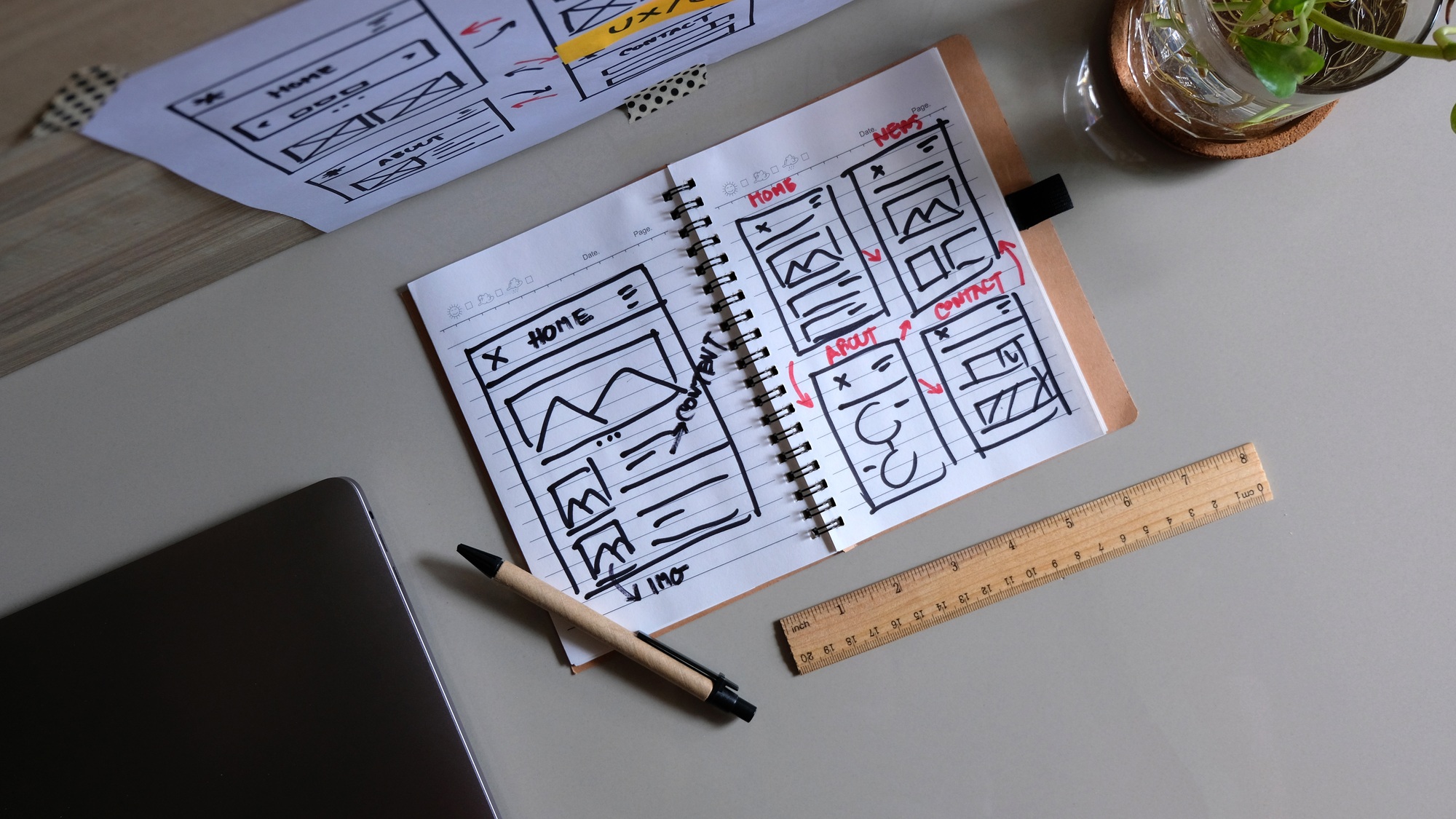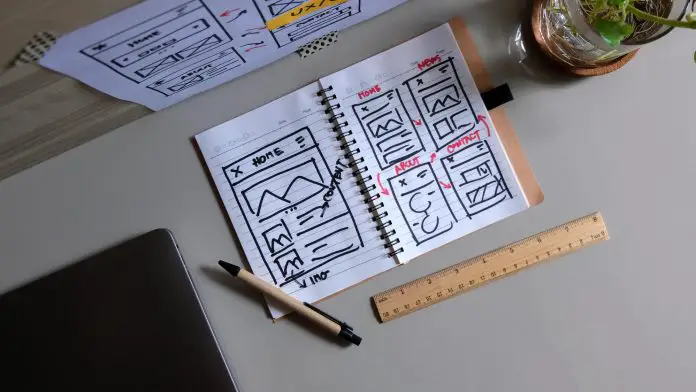Key Takeaways

- Understanding Prototypes: Product prototyping is the iterative development of preliminary models, critical for transforming an idea into a tangible solution that meets market needs.
- Importance of Prototypes: Prototypes help in testing ideas, identifying design issues, attracting investors, and gathering user feedback before full-scale production.
- Creation Steps: Key steps to create a prototype include defining the product idea, researching competitors, and creating initial sketches and designs to visualize the concept.
- Prototyping Methods: Utilize low-fidelity prototypes for quick validation and high-fidelity prototypes for detailed simulations to refine functionality and aesthetics.
- Tools for Prototyping: Leverage software like Sketch, Figma, and Adobe XD for digital prototyping, while selecting appropriate materials such as cardboard and 3D printing filaments for physical prototypes.
Bringing your product idea to life starts with creating a prototype. This crucial step allows you to visualize your concept and test its functionality before investing time and money into production. Whether you’re an entrepreneur with a groundbreaking idea or a hobbyist looking to innovate, understanding the prototyping process can set you up for success.
Understanding Product Prototyping

Prototyping involves creating an early model of your product, allowing you to explore ideas practically. This process plays a crucial role in transforming your concept into a tangible solution for your small business.
Definition of Product Prototyping
Product prototyping refers to the iterative development of a preliminary version of a product. These prototypes can vary in fidelity, from simple sketches to more advanced, functional models. You create prototypes to validate design choices, assess user experience, and refine your product’s features based on feedback.
Importance of Prototypes in Product Development
Prototypes serve several critical functions in product development for small businesses:
- Testing Ideas: You can experiment with different design concepts, discovering what resonates with your target market.
- Identifying Issues: Prototypes reveal design and functionality issues early, saving time and reducing costs later in the development process.
- Attracting Investors: A tangible prototype can help you showcase your product vision to potential investors or partners, increasing the likelihood of securing funding.
- User Feedback: Prototypes allow you to gather valuable feedback from users before full-scale production, ensuring your final product meets market needs.
Utilizing prototypes effectively enhances your development process, fostering innovation and responsiveness in your small business.
Steps to Create a Product Prototype

Creating a product prototype involves several key steps that help transform your idea into a tangible solution. These steps ensure clarity, competitiveness, and an effective development process for your small business.
Step 1: Define Your Product Idea
Define your product idea by developing a clear vision. Brainstorm and research the market to identify an unserved niche or a tech-related problem your product can solve. Engage in team discussions and gather insights from potential customers to refine your concept. Ensure your idea directly fills a specific need or addresses a customer problem, as this is critical for your product’s viability.
Step 2: Research and Analyze Competitors
Analyze similar products in the market to assess their innovation and uniqueness. Conduct thorough research on your competitors to understand the components that comprise their products and how they function together. Identify potential improvements and innovations for your own product by dissecting what works and what doesn’t. This competitive analysis equips you with valuable insights essential for your small business to stand out in the tech landscape.
Step 3: Create Initial Sketches and Designs
Begin creating initial sketches and designs that visually represent your product idea. Use tools or software suited for your design preferences, focusing on functionality and aesthetics. Develop multiple iterations as part of this creative process. The designs serve as a foundation for your prototype, allowing you to visualize essential features and improvements before moving into production.
Choosing the Right Prototyping Method

Selecting the appropriate prototyping method is crucial in different stages of product development. It impacts how well your small business can visualize ideas and address consumer needs.
Low-Fidelity Prototyping
Low-fidelity prototypes are quick, flexible, and cost-effective. These prototypes allow you to explore various ideas and concepts rapidly. Use them in the early stages to validate your product idea and generate empathy for your target audience. Common methods include sketches, paper models, or wireframes. They support immediate feedback from potential users, enabling you to identify consumer problems before investing in higher fidelity options.
High-Fidelity Prototyping
High-fidelity prototypes simulate the actual user experience and serve to highlight potential issues before production. These prototypes are more detailed and can include interactive features. Utilize them later in the design process to refine functionality and aesthetics. High-fidelity prototypes often involve technology tools such as 3D printing or software simulations. Engaging with these methods can help your small business make informed decisions and improve product-market fit by offering a realistic representation of the final product.
Tools and Resources for Prototyping

Prototyping requires specific tools and resources, which can significantly enhance your product development process. Understanding the right software and materials can lead to more effective prototyping for your small business.
Software Tools for Digital Prototyping
Utilize software tools to create digital prototypes that accurately represent your product’s functionality and design. Popular tools include:
- Sketch: Ideal for designing UI/UX layouts, Sketch facilitates quick iterations and allows for seamless collaboration.
- Figma: Figma supports real-time collaboration and offers robust design features, making it suitable for teams working on interactive prototypes.
- Adobe XD: Adobe XD provides vector-based design capabilities, enabling you to prototype interactive user experiences efficiently.
- Fusion 360: This software combines CAD, CAM, and CAE tools, perfect for engineering detailed 3D models that reflect your product’s mechanics.
- InVision: InVision excels in creating interactive prototypes, allowing you to simulate user interactions effectively.
These software options enhance functionality and visual appeal, helping you present prototypes to potential investors or users.
Materials for Physical Prototyping
Select appropriate materials for creating physical prototypes that bring your product to life. Common materials include:
- Cardboard: Inexpensive and easy to mold, cardboard allows for rapid prototyping and tangible testing of basic designs.
- 3D Printing Filament: Use plastic filaments, like PLA or ABS, for creating detailed and durable models through 3D printing technologies.
- Foam Board: Foam board offers a lightweight option for building mock-ups, facilitating easy modifications during the design stage.
- Wood or Acrylic: For more robust prototypes, consider using wood or acrylic to ensure structural integrity while testing functionality.
Choosing the right materials supports effective product testing and feedback gathering, which are crucial for refining your final product.
Conclusion

Creating a product prototype is an essential step in transforming your ideas into reality. By embracing the prototyping process, you can visualize your concepts and test their functionality before diving into production. This iterative approach not only helps identify potential issues early on but also allows you to gather valuable feedback from users.
Utilizing the right tools and methods tailored to your project’s needs will enhance your development process. Whether you opt for low-fidelity sketches or high-fidelity models, each stage offers unique insights that can significantly improve your product’s market fit. With a clear vision and the right resources, you’re well on your way to developing a successful product that meets consumer demands.
Frequently Asked Questions

What is product prototyping?
Product prototyping is the process of creating an early model or version of a product. It allows entrepreneurs and hobbyists to visualize their ideas, test functionalities, and identify issues before full-scale production. Prototyping helps transform concepts into tangible solutions, making it a crucial step in product development.
Why is prototyping important for small businesses?
Prototyping is essential for small businesses as it helps test ideas, gather user feedback, and identify potential problems early. It also aids in attracting investors and refining product design, ultimately supporting innovation and aligning products with market needs.
What are the steps to create a product prototype?
To create a product prototype, start by defining your product idea and conducting market research to identify unserved niches. Analyze competitors and create initial sketches that represent your vision. These sketches form the foundation for developing a functional prototype.
What are low-fidelity and high-fidelity prototypes?
Low-fidelity prototypes include simple sketches or paper models that allow for quick idea exploration and immediate feedback. High-fidelity prototypes, on the other hand, simulate the actual user experience with detailed interactivity, helping refine functionality and aesthetics.
What tools and materials are needed for effective prototyping?
Effective prototyping requires various tools and materials. Digital prototyping tools include Sketch, Figma, and Adobe XD, while physical prototyping materials may include cardboard, 3D printing filaments, and foam board. Selecting the right resources is crucial for successful product testing and feedback.
Image Via Envato: 1footage, sarawaniza, nateemee, sofiiashunkina, prathanchorruangsak, bialasiewicz, poungsaed_eco



